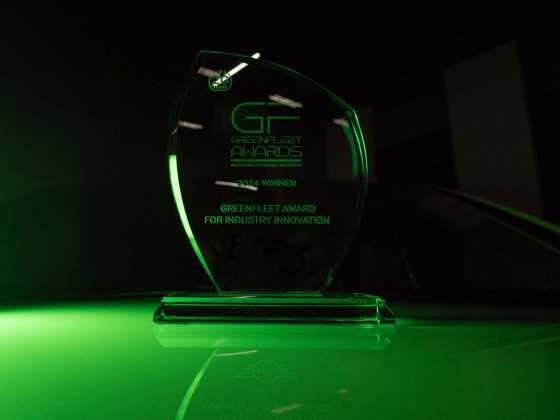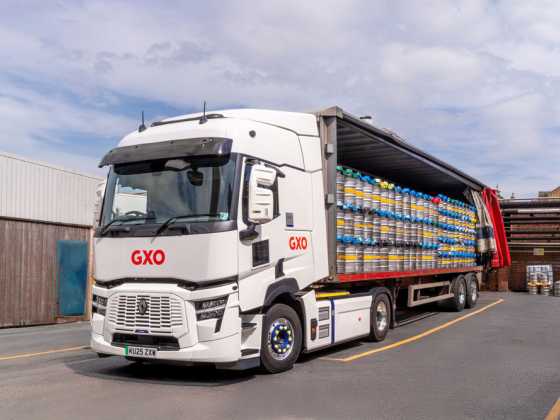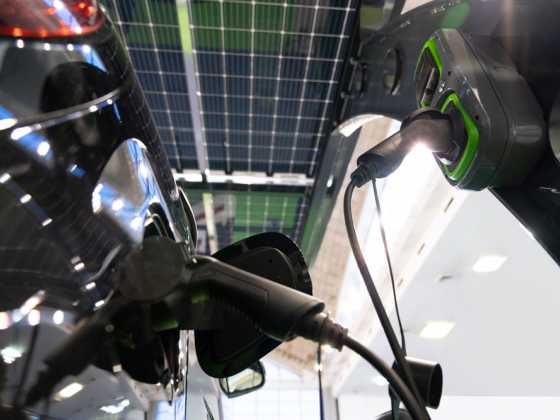Technology and data to drive EV decisions

As fleet operators face growing pressure to move to zero-emission vehicles, telematics and artificial intelligence are becoming essential tools, offering powerful insights for a smoother transition
Telematics solutions allow managers to collect and analyse detailed vehicle data, including information on fuel consumption, speed, location, servicing requirements and driver behaviour. This data enables fleet managers to identify patterns and introduce measures to improve operations and safety.
For those moving toward electric vehicles, telematics is particularly valuable. It can assess which vehicles in the fleet are ready to be switched to electric models based on mileage, trip patterns and charging requirements. This enables a smoother and more cost-effective transition to zero-emission transport.
Artificial intelligence
Artificial intelligence is playing an increasingly predominant role in fleet technology. As fleet operations become more complex, AI offers a way to manage and automate many of the variables involved, from fuel efficiency and vehicle maintenance to decarbonisation planning and route optimisation.
AI tools are being used to predict vehicle performance, simulate EV adoption scenarios and provide recommendations. In the context of transitioning to electric vehicles, AI systems can analyse vast amounts of fleet data to determine which vehicles are most suitable for replacement, what kind of infrastructure will be needed and how changes might impact operations. These tools can even calculate total cost of ownership and model long-term savings.
For organisations that may lack the resources for in-house fleet analysis, AI levels the playing field. It offers insights that would otherwise be out of reach, allowing even modest fleets to plan their decarbonisation journeys with confidence.
Fleet technology companies are quickly integrating AI into their platforms. Dynamon’s Decarbonisation Planning Report, for example, uses predictive software to generate complete electrification roadmaps based on real-world fleet data. Webfleet has introduced Fleet Advisor, an AI-powered platform that turns operational data into instant, actionable insights using natural language queries. Geotab’s ACE tool acts as an AI copilot, drawing on predictive analytics, GPS tracking and EV performance data to answer complex fleet questions with speed and clarity. Samsara’s AI, trained on over 14 trillion data points, powers insights that improve safety and operational performance.
Meanwhile, tools like CrowdCharge’s simulator are helping to plan EV infrastructure, using digital models to optimise installation costs, simulate vehicle-to-grid (V2G) charging and reduce the need for costly grid upgrades.
In terms of improving safety, Microlise’s driver-facing AI distraction camera offers invaluable footage of the person behind the wheel which increases safety by identifying and addressing behaviours that could cause accidents. The cameras do not act as spies in the cab; instead, the company have seen that when they are implemented properly and with full transparency, these solutions are less about surveillance and have a greater focus on protection, safety and support. The footage gives vital context to incidents that external cameras or telematics data alone cannot deliver, which is essential when drivers face unfair blame or false accusations. Coaching can also be targeted at specific issues that the cameras have captured, that will help both driver and company improve their safety and performance.
While the promise of AI is substantial, its adoption does come with risks. Data security remains a top concern, with many fleet managers wary of exposing sensitive information through cloud-based platforms. The potential misuse of personal data collected via sensors or cameras also raises concerns around privacy and surveillance. These challenges underscore the importance of strong cybersecurity frameworks and the need for clear human oversight. AI should be used to support decision-making, not replace it entirely.
Data to help with the switch
Delivery company bpost, part of the Belgian Post Group, used telematics to help with its ambitious plan to electrify its entire last-mile delivery fleet, comprising 10,000 vans, by 2030. Having already converted a quarter of the fleet to electric, bpost used Geotab telematics to provide the reliable, EV-specific data needed to make the transition financially viable and operationally efficient.
A major challenge for bpost was understanding how often vehicles really needed to charge. Without accurate data, they would have had to invest in prohibitively expensive high-voltage infrastructure capable of charging every van simultaneously.
Real-time telematics data – particularly on state of charge (SOC) and actual energy consumption – allowed the company to implement a staggered charging strategy. This meant some vehicles only needed charging every two to four days, significantly reducing power demands and infrastructure costs.
The telematics insights also helped address the range anxiety often associated with EVs. By showing drivers that they could complete routes without starting the day with a full charge, and by offering targeted coaching to those with poor energy efficiency, bpost was able to improve driver behaviour and optimise electric vehicle range.
Beyond operations, the data played a strategic role in planning for the long-term electrification of the fleet. It enabled bpost to accurately calculate the total cost of ownership (TCO) for its electric vans, showing them to be 8.9 per cent cheaper over their lifespan compared to internal combustion engine (ICE) vehicles. This gave the company the financial confidence to expand its electric fleet to 3,000 vehicles by the end of 2025.
Understanding the driver
For SES Water, a utility company responsible for delivering clean water to parts of London and the South East, the use of telematics not only helped with the move to electric vehicles, it also reduced driver risk significantly, which was a key priority. During a trial of Lightfoot’s in-cab driver coaching system, SES Water fitted their fleet with Lightfoot devices, initially running them in a “blind” mode to benchmark driving standards without alerting drivers. Once the live phase began, drivers began receiving real-time feedback, audio prompts and visual cues, to reduce aggressive habits like harsh braking, sharp cornering and rapid acceleration.
The results were immediate and dramatic. Dangerous driving across the fleet dropped to zero. Fuel efficiency improved, with a 15.1 per cent increase in miles per gallon and a nine per cent reduction in engine idling. These operational gains translated into financial savings too – over £95,000 in fuel costs avoided and a total of 229 tonnes of CO2 emissions prevented from entering the atmosphere.
Crucially, this behavioural shift has also supported SES Water’s transition to electric vehicles. A smoother driving style reduces energy consumption and extends vehicle range – key factors in making EVs viable for utility fleets operating over large areas. The technology has also helped SES Water identify which vehicles are best suited to electrification by analysing real-world usage and driver habits.
As the transport sector continues its journey toward net-zero, the integration of telematics and AI is proving to provide the data-driven foundation needed to make the electric transition work.






